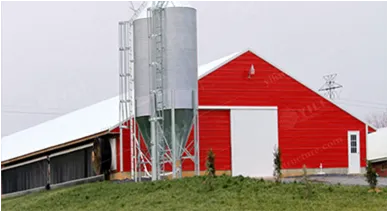- Afrikaans
- Albanian
- Amharic
- Arabic
- Armenian
- Azerbaijani
- Basque
- Belarusian
- Bengali
- Bosnian
- Bulgarian
- Catalan
- Cebuano
- Corsican
- Croatian
- Czech
- Danish
- Dutch
- English
- Esperanto
- Estonian
- Finnish
- French
- Frisian
- Galician
- Georgian
- German
- Greek
- Gujarati
- Haitian Creole
- hausa
- hawaiian
- Hebrew
- Hindi
- Miao
- Hungarian
- Icelandic
- igbo
- Indonesian
- irish
- Italian
- Japanese
- Javanese
- Kannada
- kazakh
- Khmer
- Rwandese
- Korean
- Kurdish
- Kyrgyz
- Lao
- Latin
- Latvian
- Lithuanian
- Luxembourgish
- Macedonian
- Malgashi
- Malay
- Malayalam
- Maltese
- Maori
- Marathi
- Mongolian
- Myanmar
- Nepali
- Norwegian
- Norwegian
- Occitan
- Pashto
- Persian
- Polish
- Portuguese
- Punjabi
- Romanian
- Russian
- Samoan
- Scottish Gaelic
- Serbian
- Sesotho
- Shona
- Sindhi
- Sinhala
- Slovak
- Slovenian
- Somali
- Spanish
- Sundanese
- Swahili
- Swedish
- Tagalog
- Tajik
- Tamil
- Tatar
- Telugu
- Thai
- Turkish
- Turkmen
- Ukrainian
- Urdu
- Uighur
- Uzbek
- Vietnamese
- Welsh
- Bantu
- Yiddish
- Yoruba
- Zulu
Dec . 13, 2024 01:32 Back to list
The Rise of Prefabricated Engineered Buildings A Solution for Modern Construction
In the rapidly evolving landscape of construction, prefabricated engineered buildings are gaining significant attention as a robust solution to the challenges faced by the industry. This innovative approach transcends traditional building methods, offering efficiency, sustainability, and cost-effectiveness, which are increasingly crucial in today’s fast-paced world.
Prefabricated engineered buildings (PEBs) are structures that are manufactured off-site in controlled environments and then transported to the construction site for assembly. This method contrasts with conventional construction practices, where structures are built on-site. The shift to prefabrication comes with numerous advantages, making it an attractive choice for developers and builders alike.
One of the most significant benefits of PEBs is the efficiency in the construction process. Because components are pre-manufactured, projects can proceed at a much faster pace compared to traditional methods. This speed can be particularly beneficial in commercial construction, where time is often equated with money. Instead of waiting for weather conditions to be favorable for on-site construction, builders can assemble prefabricated pieces in a matter of days, ensuring that the project stays on schedule and within budget.
Moreover, prefabricated buildings typically result in lower labor costs. With a majority of the construction happening off-site, there is less need for extensive manpower on-site. This not only reduces labor costs but also minimizes the risks associated with labor shortages, which can stall projects and inflate expenses.
prefabricated engineered building

Sustainability is another critical factor contributing to the rise of PEBs. The construction industry is a significant contributor to environmental degradation, with substantial waste generated during the building process. Prefabrication leads to reduced waste, as materials can be manufactured in bulk and precisely cut to size. This results in fewer leftover materials and less energy consumed during the construction phase. Furthermore, PEBs can utilize sustainable materials, promoting greener building practices that align with worldwide efforts to mitigate climate change.
Another compelling aspect of prefabricated engineered buildings is their adaptability and versatility. PEBs can be designed for a range of applications, from residential homes to commercial offices and industrial facilities. This flexibility allows architects and engineers to explore innovative designs that were previously challenging to implement using conventional methods. With the rising popularity of custom-built residences, PEBs cater to the demand for personalized structures while maintaining cost efficiencies.
Despite these advantages, the implementation of prefabricated engineered buildings is not without challenges. Issues such as transportation logistics can complicate the delivery of large prefabricated components. Additionally, there can be concerns regarding the quality of materials and workmanship when off-site manufacturing is involved. Therefore, it is vital for stakeholders in the construction industry to choose reputable manufacturers who adhere to strict quality control standards.
Another consideration is the regulatory environment. Building codes and regulations may vary significantly between regions, which can impact the acceptance and implementation of prefabricated buildings. Collaborating with local authorities and engaging in thorough planning is essential for successful PEB projects.
In conclusion, prefabricated engineered buildings are becoming an increasingly prominent option in the construction industry. With benefits like reduced construction time, lower labor costs, sustainability, and design versatility, PEBs present a robust alternative to traditional building methods. As the demand for faster and more efficient construction continues to grow, embracing prefabrication could very well be the next step in modernizing the construction landscape. Stakeholders must overcome existing challenges through careful planning and collaboration, paving the way for a future where prefabrication plays a central role in building our communities.
-
How Do Prefabricated Steel Structures Transform Modern Construction?
NewsJul.14,2025
-
How Do Prefabricated Metal Buildings Redefine Modern Construction?
NewsJul.14,2025
-
How Do Prefab Insulated Metal Buildings and Steel Structures Revolutionize Modern Construction?
NewsJul.14,2025
-
How Do Pre - Engineered Steel Structures Redefine Modern Construction?
NewsJul.14,2025
-
Advancing Modular Construction with Prefabricated Metal Structures
NewsJul.14,2025
-
Advancing Industrial Infrastructure with Prefabricated Steel Solutions
NewsJul.14,2025
Products categories
Our Latest News
We have a professional design team and an excellent production and construction team.












